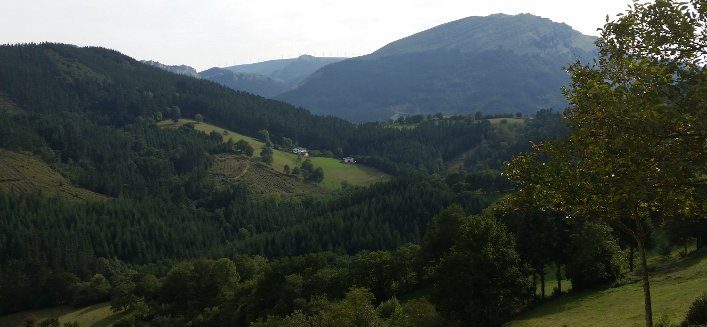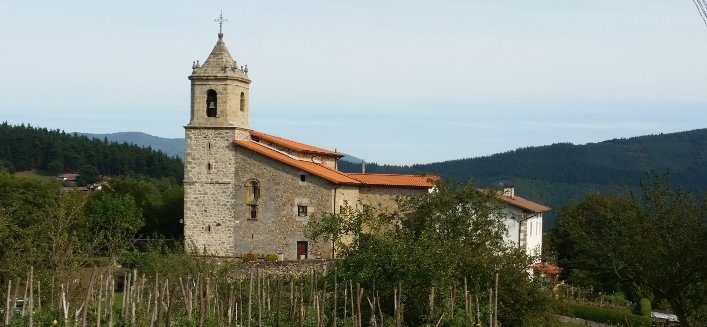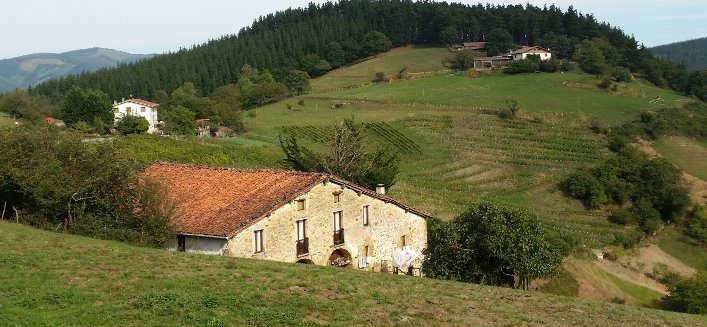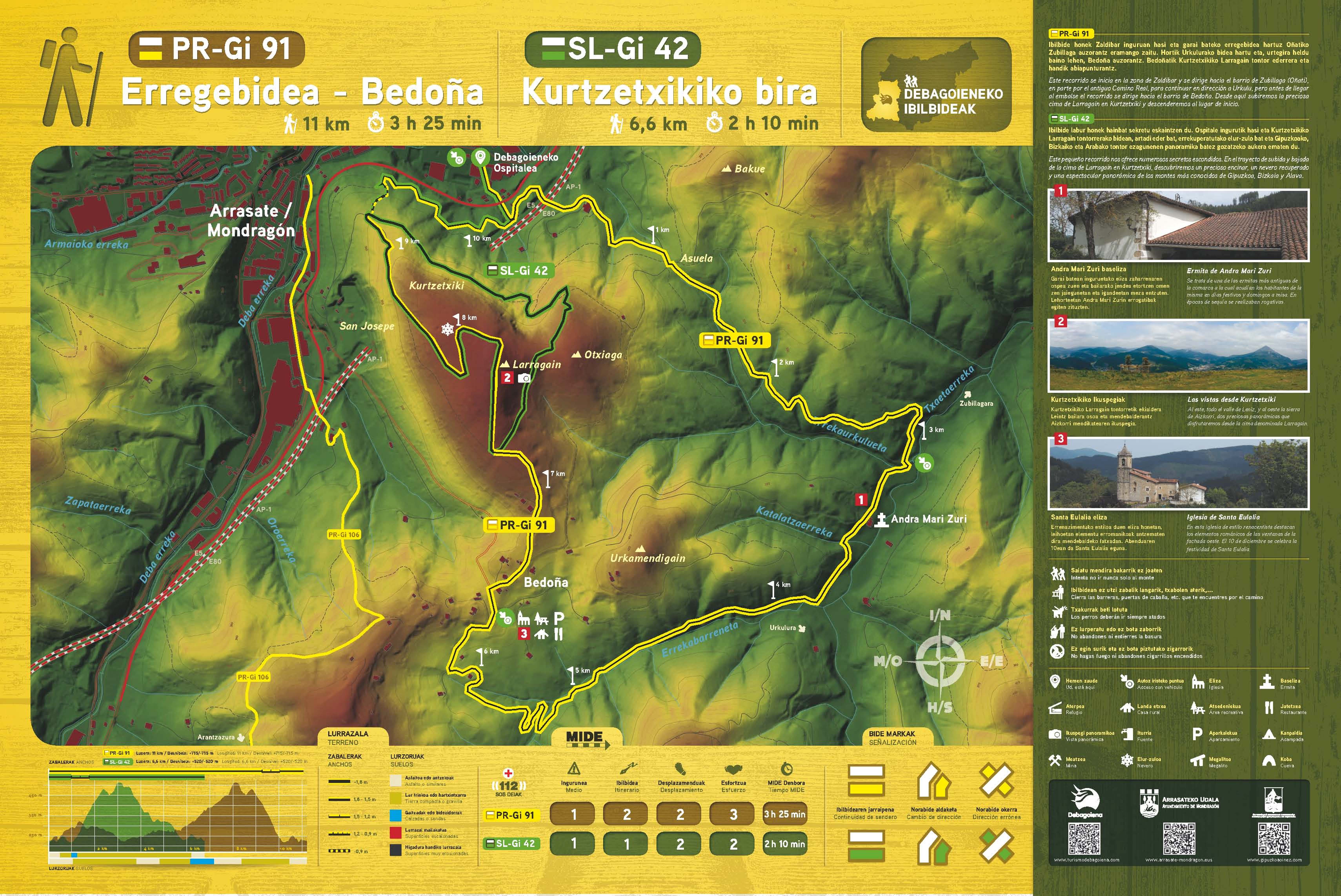This route starts in the area of Zaldibar going in the direction of Zubillaga hamlet (Oñati), partly along the ancient Royal Route continuing towards Urkulu arriving in the lowlands of Bedoña and ascending to Bedoña hamlet, to descent to the hamlet of San Andres.
The route starts from behind the Upper Deba Hospital, following the road to Etxezuri House, along the paved route to Antzarigartua. Initially, it may seem very steep but as you progress the slope eases out. After passing under the motorway and ascending the steep slope you bear left. Keep going until you reach a junction where you leave the paved road and continue along a dirt track.
a.- Bedoña Hamlet. This path covers only part of the ancient Royal Route. It goes as far as a small knoll, “Alto de Azuela” from where the roads take you to Bedoña, Zaldibar, Zubillaga and Mount Bakue. However, the route descends down a wide track to the vicinity of Zubillaga. On this road you will find two ferruginous water springs.
b.- Bridge of the Royal Route. After completing the long descent, next to a sprawling meadow you bear left following the course of the river. Finally you come to the only remains of the ancient Royal Route, the small stone bridge. On crossing the bridge you turn right and by road you come to an important junction, in the vicinity of Zubibarri.
c.- Shrine of Andra Mari Zuri. Leaving behind this junction you continue along a cement path passing next to the farmhouse-hermitage of Andra Maria Zuri. Next you take the first road to the right. Here you find yourself in the narrow and beautiful valley of Errekabarren. At the skirts of the mountain, between pines and luscious trees, the route goes to the bottom of the valley of Bedoña hamlet.
d.- Church of Santa Eulalia. The route continues along the lower part of Bedoña hamlet. Ascending you come to Mendibitzu farmhouse. However, the slope continues until the church of Santa Eulalia.
e.- Hamlet of San Andrés. Here you turn left and this route joins the PR-Gi 106 until it turns right at the path that begins at Sologaizto farmhouse. Here you begin the descent to the hamlet of San Andres.
Mediaeval quarter of Arrasate
The mediaeval quarter dates from 13th century and preserves part of its initial structure. Laid out in three streets, it preserves the three ancient entrance gateways. On the interior there is a series of buildings of undeniable interest, particularly the Town Hall and the parish church of San Juan Bautista.
Shrine of Andra Mari Zuri.
It is said to be one of the oldest churches in the region to which the inhabitants of the area attend mass on feast days and Sundays. It also had a very close relation with the shrine of San Andres and, annually the Virgin was taken in procession to San Josepe. The image of the Virgin may have been brought from the Plains of Alava (north east Alava) and more specifically from Vitoria.
The inhabitants of Bedoña recall how they were told that many years ago the parish priest lived in the farmhouse of Andra Mari Zuri and that burials were performed inside the house. They also mention that mass didn’t start until an old woman arrived from the ancient parish of Bolibar.
On 5 August the well-known popular pilgrimage is celebrated and the representatives of the farmhouses of Bedoña attended with a candle which they offered to the Virgin. In periods of drought they offered up prayers of supplication.
Mendibitzu farmhouse
Juan Arana Ezpeleta (Fray Joaquin of Bedoña) was born here. This well-known Basque lyric poet died after receiving the first prize for poetry “Euskaltzaleak”. He wrote numerous poems under the pseudo name of Loramendi. He died a few days before celebrating his first mass.
Church of Santa Eulalia
Outstanding in this Renaissance style church are the Romanesque elements of the windows on the west façade. The feast of Santa Eulalia is celebrated on 10 December.
Zabale Farmhouse
It is said that this farmhouse was the Town Hall of the region; it had a meeting hall, archives, a small altar and two entrances, one for the masters and another for the domestic service. It seems there was also a jail. According to the local people, paper garments were made for the Virgin and later adorned. In those days they didn’t have mannequins so they used the image of the Virgin as a model.
Perhaps it was the turn of the hamlet of Bedoña to be the mayor’s office for Leniz valley and the Town Hall was installed in this farmhouse.






